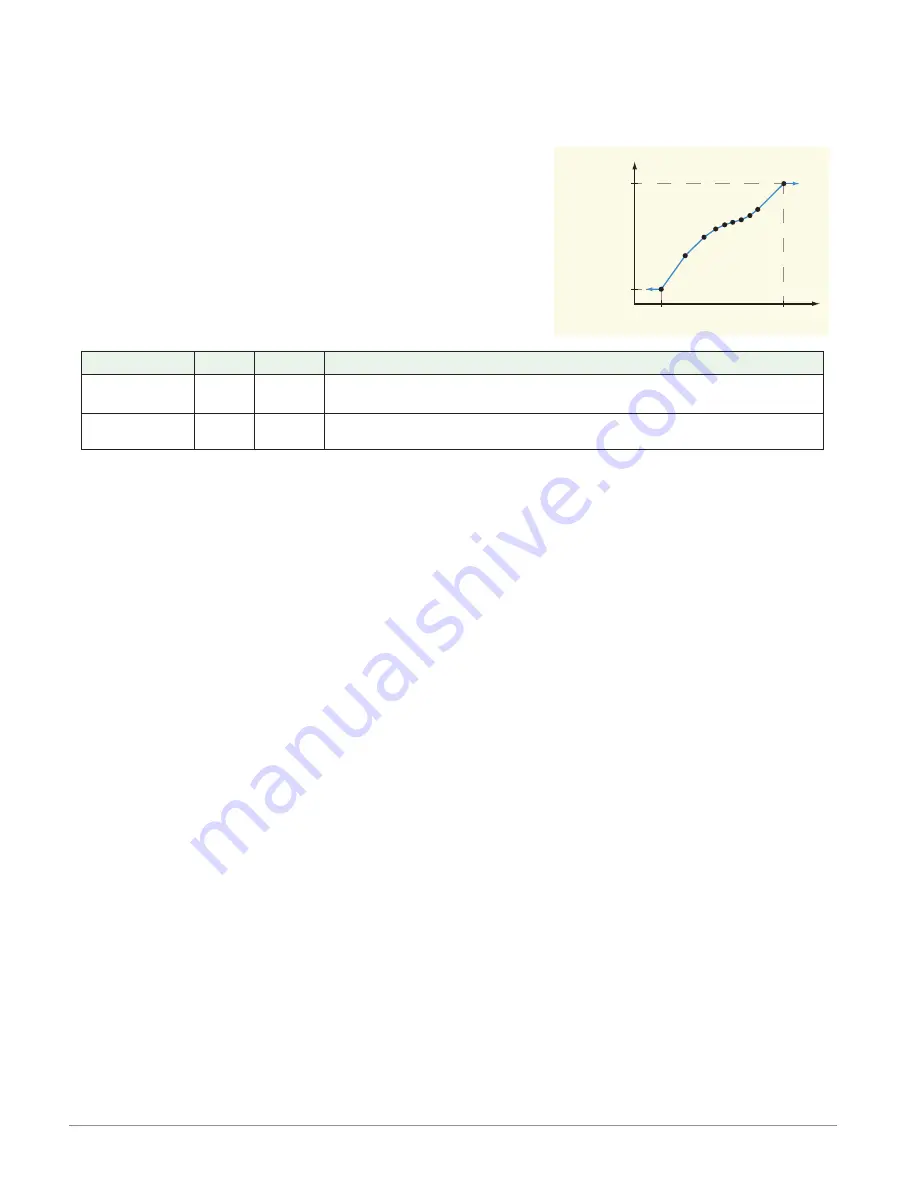
Watlow D4T Data Logger
•
83
•
Chapter 5 Function Reference
Interpolated
The output is equal to the scaled input plus the offset. The scaling curve is composed of line-
segments connecting the ten points in numerical order as shown in the illustration below. The
output changes gradually as the input increases or decreases.
The points of the scaling curve must be in ascending or-
der of the input value such that Input Point 1 is the lowest
value to be scaled, Input Point 2 is the next higher value
and so on. If fewer than ten points are required, set the
unused input points equal to the last point. For example, if
the curve requires eight points, use points one to eight for
the curve and set points nine and ten equal to point eight.
Signals
Direction
Label
Type
Function
Receiver
- - - - Analog
Signal to be scaled
Transmitter - - - - Analog
Scaled signal with offset applied
Function
To scale the input according to a curve made up of interpolated line segments defined by ten
points, set Function to
Interpolate.
Units
Set the units of the output value.
Options:
• Source: the output has the same units as the signal connected to the top receiver.
• None: the output is a pure number without units.
• Absolute Temperature: the output is a temperature on the Celsius or Fahrenheit scale.
For example, 33° F as an absolute temperature is one degree above the freezing point
of water. An absolute temperature can be used as a set point or compared with other
temperatures to determine which is hotter or colder.
• Relative Temperature: the output is a relative number of degrees, not an absolute tem-
perature. For example, the difference between the two measured temperatures, 120°
C and 100° C is 20 degrees, but it is not the temperature 20° C. A relative temperature
is appropriate for use as a calibration offset or a deviation alarm set point.
• Power: the output is a percentage with 100% representing full power and 0% represent-
ing no power.
• Process: the output is in units of measure other than degrees Fahrenheit, degrees Cel-
sius or relative humidity.
• Relative Humidity: the output is a measurement of percent relative humidity (%RH).
Input
Output Point 10
Output Point 1
Input Point 10
Input Point 1
Output
Interpolated
















































